America’s national parks are popular destinations. For good reason! Our country boasts incredible landscapes, from wetlands to old-growth forests to mountains and everything in between.
Due to sensitive ecosystems, though, many national parks aren’t very dog friendly. Most NPS locations allow pets only in parking lots, developed campgrounds, and paved viewpoints. These regulations restrict their presence on hiking trails.
This comes as a disappointment to many dog lovers looking to travel with their pups. Don't worry: A few national parks welcome furry friends with open arms! Here’s what to know about visiting one of America's protected public spaces with your dog in tow.
Disclaimer: National park rules might change unexpectedly. The below information has been fact checked at the time of writing. If you're planning a trip with your canine companion, we recommend reading official NPS regulations on the nps.gov website before you go.
Know Before You Go: National Park Checklist for Your Dog
What to bring with you to a dog-friendly national park
Here are a few things to bring with you when visiting any national (or state) park in the United States.
Always pack dog waste bags
Keep your parks clean! Our national parks are incredible public resources—it's our duty to preserve them for future generations.
Always pack a few extra poop bags in case you need to pick up after your pup. Consider scooping any left-behind piles you come across, too. This will make the environment safer for everyone who visits. Prompt cleanup prevents water pollution, slows the spread of parasites, and encourages parks to keep allowing pets. (When too many dog parents break the rules, government organizations feel pressure to add more restrictions to keep areas clean.)
Bring fresh drinking water
Some national parks offer water fountains for you to fill up bottles and bowls, but it’s a good idea to pack some of your own just in case. Never leave your dog’s hydration (or your own) up to chance—especially on hot days.
A good rule of thumb is that you should have one gallon of water per person or pet per day.
Make sure your dog is wearing a collar or harness with ID tags
Bring a well-fitted collar or harness along with your dog’s identification tags. Your pup will be required to wear this at all times while visiting a national park.
Keep your pup on a secure leash
Along with a collar or harness, bring a leash. Leash laws in national parks are important to protect sensitive terrain, endangered wildlife, and other visitors. There are no national parks in the United States that allow dogs off leash in any area.
(The only exception here: Under the Americans with Disabilities Act, task-trained service dogs are allowed to work off leash if a leash would directly interfere with their ability to perform their job. Outside of that specific situation? Your pup needs to be tethered while in any NPS environment!)

What to do before going into a national park with your dog
Research the park ahead of time
Read reviews and be on the lookout for any common issues—like unruly dogs, treacherous hiking trails, or left-behind waste that your dog might get into.
The National Parks Service website is a great place to start. They even have information on how to turn your dog into a “BARK ranger!”
Have your national parks pass or entrance fee ready
Most national parks in the United States charge an entrance fee that goes to support the National Park Service outreach and upkeep. (There aren’t extra charges for bringing your dog along, though. Three cheers for Fido.)
You can read more about entrance fees by park here.
Know what you’ll do with your pup if you enter a building
Most national park buildings are not pet friendly—and it’s dangerous to leave your dog unattended in a hot car. Plan ahead of time if you want to be able to see visitor centers without them. (You could have one member of your group take a turn waiting outside, for example.)
Make a “backup” plan just in case
Some national parks can become more dangerous in certain types of weather. Road construction and other revitalization projects can close hiking trails, viewpoints, and parking lots.
While you should generally be able to find up-to-date information online before setting out for your trip, it never hurts to have a few backup trails or other activities in mind in case you realize Plan A isn’t the best fit for you and your dog.
The Most Dog Friendly National Parks in the United States
Let’s explore the United States national parks that welcome your pup!
Struggling to find a dog friendly national park near you?
Sniffspot might be the solution.
Sniffspot is the largest network of private dog parks for rent in the world. Each of the thousands of Sniffspot dog parks are hosted by locals on private land with 100% private bookings to maximize safety for guests and their dogs.
Sniffspot offers various types of dog parks, including fenced fields, water parks, indoor dog parks, dog beaches, and more—so you can carve out time to give your dog the fulfillment and off-leash freedom they deserve even if they have to wait back at the hotel or Airbnb while you visit a few places they aren’t allowed, too.
Click here to learn more about Sniffspots near you!
Acadia, located on the Maine coast, is one of the most popular pet-friendly national parks! Almost all 120 miles of hiking trails and 45 miles of carriage roads within the park allow pets, with the exception of a few trails that require climbing on iron rungs or ladders. (These hikes would be impassable for most canines, anyway.)
The only restricted areas are Duck Harbor Campground, Wild Gardens of Acadia, and Echo Lake Beach and Sand Beach during high season (mid-May to mid-September). Everywhere else, your furry friend is welcome to accompany you—including on the free shuttles that transport visitors around the park!
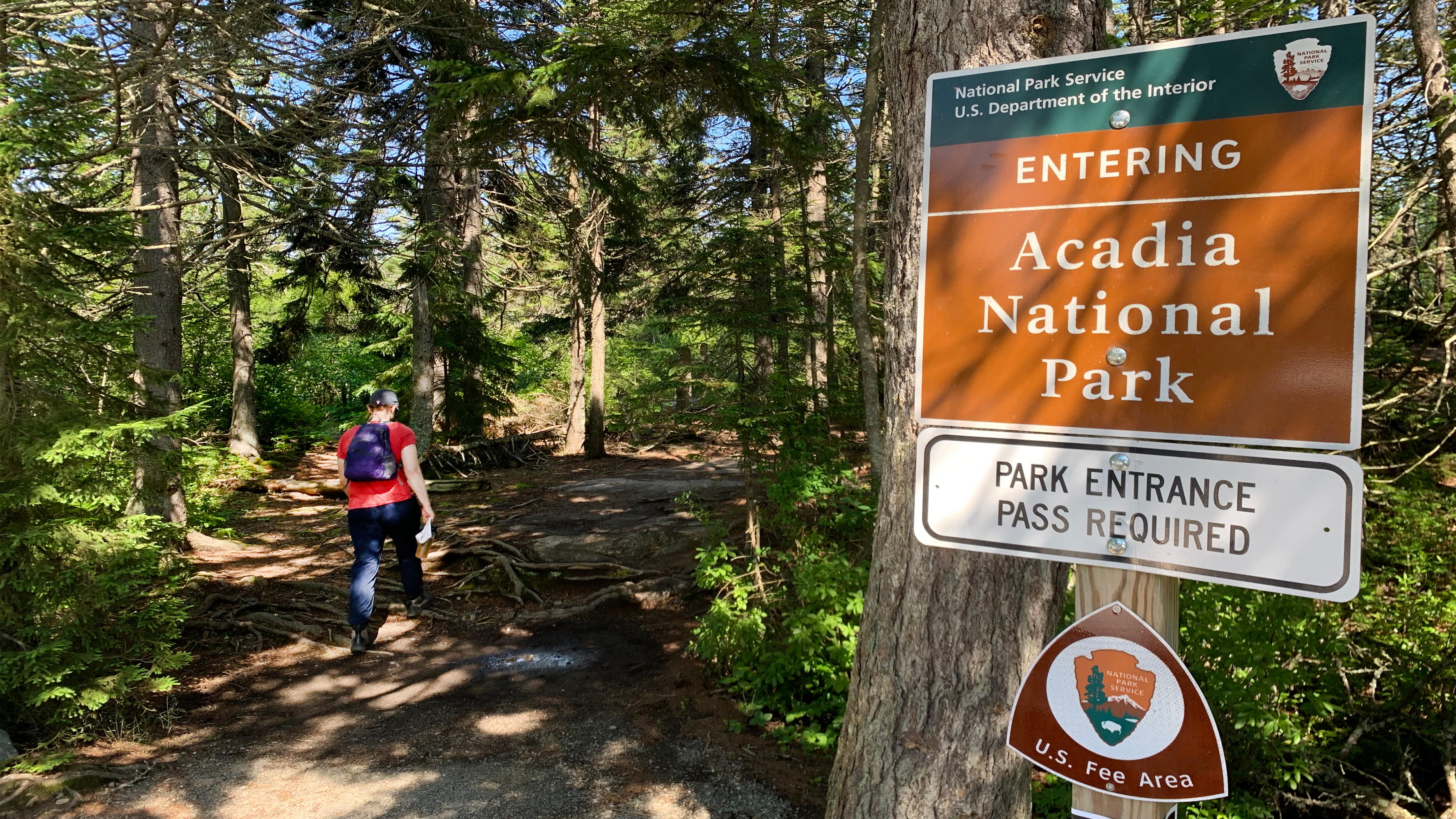
Congaree National Park in South Carolina, with the largest intact expanse of old growth bottomland hardwood forest in the southeastern United States, is a pet-friendly park that welcomes all visitors. Leashed pets are allowed on trails, including the boardwalk, as well as in the campgrounds.
This floodplain, where the Congaree and Wateree Rivers meet, supports a diverse range of plants and animals, including national and state champion trees. To fully experience the ecosystem and observe wildlife, visitors can rent a kayak or canoe.
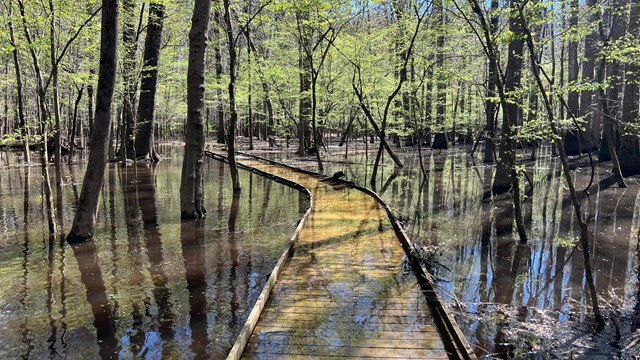
Cuyahoga Valley National Park, located in Cleveland, Ohio, was established in 2000 and follows the Cuyahoga River. You can bring your pup with you on all of the park's 125 miles of trails, which traverse woodlands, wetlands, and old fields. Some trails involve stream crossings with stepping stones or log bridges, while others, such as the Ohio & Erie Canal Towpath Trail, are flat and accessible to all experience levels.
To get the best views, head to Bradford Reservation. This trail offers stunning vistas of Tinkers Creek Gorge, Ohio's most impressive canyon, and short side trails lead to Bridal Veil Falls and the Hemlock Creek Loop Trail!
Visitors with pets should avoid the East Rim mountain-bike area and the Scenic Railroad. Be sure to check with the rangers to choose the best trail for your hiking style, and bring plenty of water for both you and your furry companion, as the dry climate and high elevation can lead to dehydration.
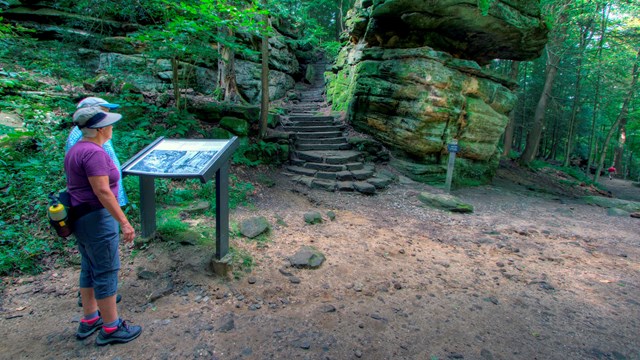
The Grand Canyon, located in northern Arizona, is one of the most popular national parks that warmly welcomes dogs. You and your furry friend can enjoy a scenic walk along the entire stretch of South Rim Trail that hugs the canyon's edge!
While the path is easy to navigate, the high altitude and arid climate can lead to dehydration, so be sure to bring plenty of water and a collapsible bowl, even if you're only planning a short stroll.
Keep in mind that pets are not permitted on shuttle buses and are prohibited from going below the rim. However, they are welcome at Mather, Desert View, and Trailer Village Campgrounds, as well as pet-friendly rooms at the Yavapai Lodge.
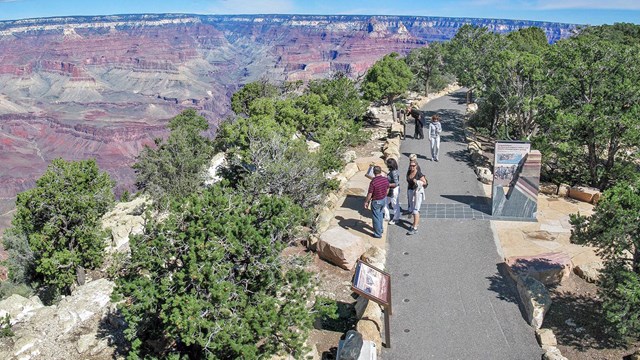
Great Sand Dunes in southern Colorado features the tallest dunes in North America, located in a diverse landscape of grasslands, wetlands, conifer and aspen forests, alpine lakes, and tundra.
Pets are permitted up to the top of the first tall ridge of dunes, located between High Dune and the Castle Creek Picnic Area, and throughout the adjoining Great Sand Dunes National Preserve. It's important to remember that the sand can become hot, so it's best to go early in the morning or late in the evening to protect your pup’s paws.

For centuries, people have flocked to Hot Springs National Park, attracted by the steaming waters that flow from the lower west slope of Hot Springs Mountain. This unique park now protects the geothermal spring water and the historic structures of this early resort town.
Your furry friend is welcome to accompany you on a leisurely half-mile stroll down Bathhouse Row and along the Grand Promenade. If you're up for something more challenging, you can explore the 26 miles of interconnected trails that run alongside the city or hang out at the only brewery located inside of a United States national park.

Indiana Dunes is not your typical tropical island—but its 15-mile stretch of sand can make you feel like you’re somewhere down south. This beautiful landscape was created by receding glaciers and features dunes, ponds, marshes, creeks, prairies, and forests. The area’s diverse habitats make it one of the most botanically rich national parks in America!
Leashed pets are allowed on the beaches located east of Indiana Dunes State Park, in the picnic areas, and in the campground. They are also allowed on all trails except for Glenwood Dune, Great Marsh, and Pinhook Bog.
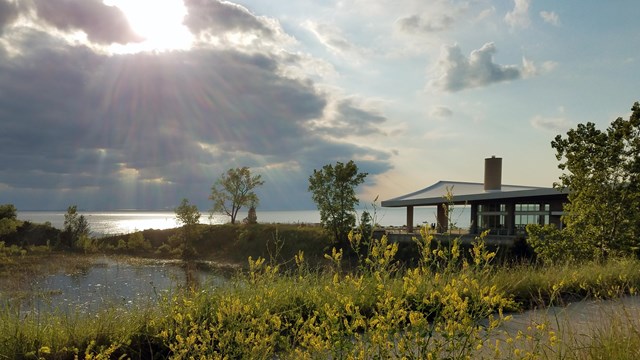
Mammoth Cave National Park is known primarily for its vast underground passageways spanning 336 miles—but it also offers over 70 miles of trails, making it a surprisingly pet-friendly destination.
There are various short trails around the Visitors Center, and the Green River Bluffs Trail is worth exploring as it passes through a hardwood forest and culminates in a scenic overlook of the Green River. For those seeking a more extended hike, the North Side Trails present several options that pass by waterfalls and cut through one of the few remaining old-growth forests in Kentucky.
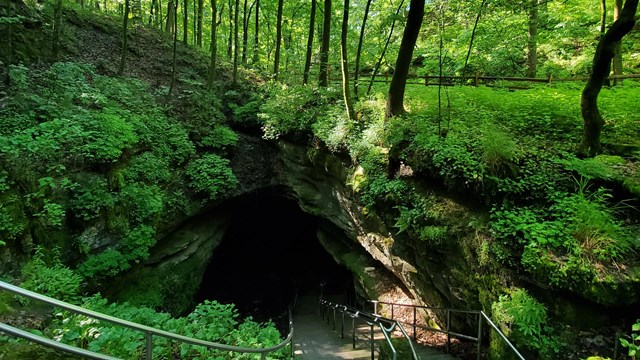
New River Gorge National Park and Preserve in southern West Virginia boasts one of the oldest rivers on the continent—a rough and tumbling white water river that flows through deep canyons. The park spans over 70,000 acres of land along the water’s path between the towns of Hinton and Fayetteville. It offers guests a plethora of scenic and recreational opportunities!
All trails in the park, including the breathtaking Endless Wall Trail with its gorge vistas and the Grandview Rim Trail, are open to pets. Visitors with dogs can also take in the beauty of Sandstone and Brooks Falls.

Petrified Forest National Park, located in eastern Arizona and named after its deposits of petrified wood, is an awe-inspiring sight. From the vibrant badlands to the northern border that stretches into the Painted Desert, it’s worthy of its national park status!
Visitors can bring their dogs on a leash to explore all of the park's trails, roads, and official wilderness areas. Be sure to keep your pup under control and within trail boundaries to protect the environment.
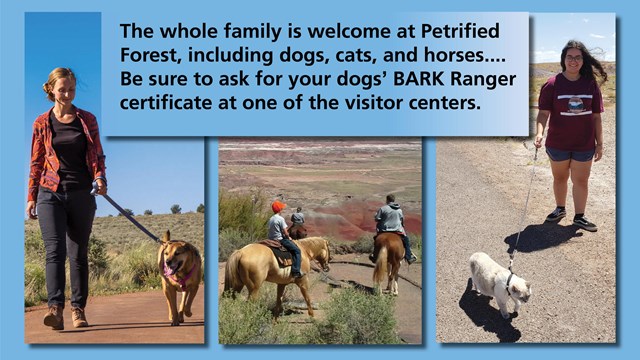
While Skyline Drive may be the most renowned attraction at Shenandoah National Park in Virginia, you won't want to miss the opportunity to stop the car and go for a hike!
With over 500 miles of trails in the park, including the pet-friendly Appalachian Trail, Shenandoah is an incredible walking destination. Dogs are only restricted from accessing about 20 miles due to challenging passages or rock climbs.
Plus pets are allowed in all campgrounds, pullouts, and picnic areas, allowing them to join you in experiencing the stunning views.
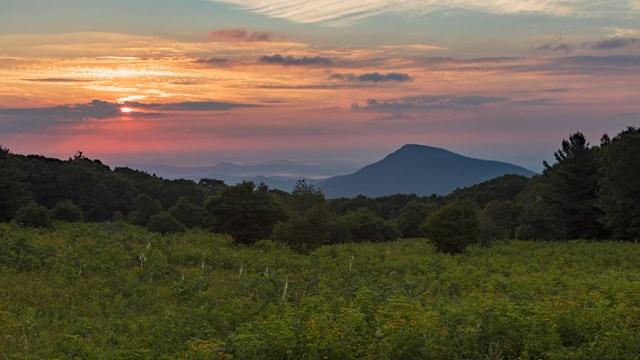
White Sands is not actually made of sand but of gypsum—which makes it one of the most remarkable dog-friendly national parks in the US. With its vast gypsum dune field covering an area of 275 square miles, White Sands is the largest such area in the world.
Visitors can bring their pets to explore the entire park, which offers nine miles of trails to discover. White Sands National Park allows dogs to explore the stunning dunes either on or off the trails while on a leash! The Playa Trail, Dune Life Nature Trail, and Interdune Boardwalk all offer intriguing exhibits about the park's geography, as well as its diverse plant and animal life.
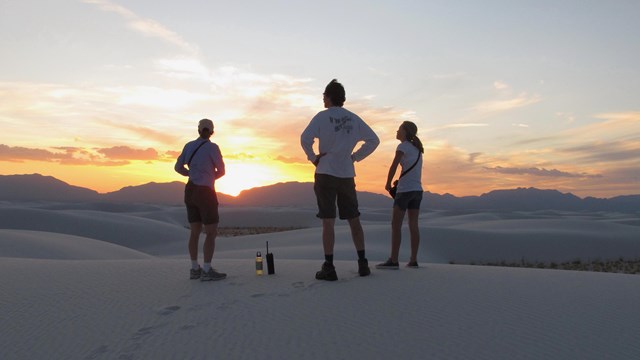
FAQ About Dog Friendly National Parks in the United States
Why do so many national parks have pet restrictions?
Many national parks have pet restrictions in place primarily to protect the natural environment, sensitive terrain, endangered wildlife, and other visitors. Pets can potentially cause harm to the delicate ecosystems of national parks by disturbing native animals, trampling vegetation, and introducing non-native species.
Additionally, some visitors may be uncomfortable or even fearful around dogs, which can impact their enjoyment and safety while visiting the park.
What national park areas are dogs usually allowed in?
While pet policies can vary among national parks, in general, dogs are usually permitted in the following areas:
- Campgrounds: Dogs are often allowed in campgrounds. They must be kept on a leash at all times.
- Parking lots and paved areas: Many national parks allow dogs in paved areas, such as parking lots and picnic spots.
- Roads and highways: Dogs are generally allowed on paved roads and highways so long as they are leashed.
It's important to note that rules can vary between national parks. Check the specific park's website or contact the park directly for their pet policy when in doubt!
Can service dogs visit national parks?
Yes, service dogs are allowed to visit national parks with their handlers! Service animals are permitted in all areas of national parks where the public is allowed—including hiking trails, visitor centers, and other public areas, even if pets are not typically allowed in those areas. (Know that some particularly strenuous trails might be impassable for a dog, though, like those that use ladders to climb rock faces, even if service dogs are technically allowed.)
Under the Americans with Disabilities Act (ADA), service animals are dogs that are individually trained to do work or perform tasks for people with disabilities.
It's important to note that emotional support animals, therapy animals, and other types of animals that provide comfort or companionship are not considered service animals under the ADA. Additionally, service dogs must be under the control of their handler at all times. Handlers are always responsible for cleaning up after them.
How can I make my dog a BARK ranger?
BARK Ranger is a program created by the National Park Service to encourage responsible pet ownership and promote awareness of pet rules and regulations in national parks.
Here’s how you can make your dog a BARK ranger:
- Follow park rules: Make sure to follow all park rules regarding pets, including keeping your dog on a leash and picking up after them.
- Respect wildlife: Keep your dog away from wildlife and do not allow them to chase or harass any animals.
- Learn about the park: Familiarize yourself with the park's pet policies and regulations before you visit.
- Take the BARK Ranger pledge: Visit the National Park Service's BARK Ranger website and take the pledge to ensure that you and your dog will follow the rules and be responsible visitors to national parks.
Learn more on the official National Park Service website!